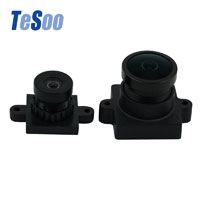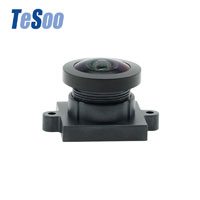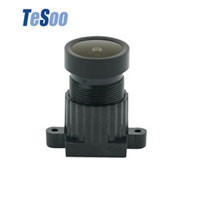Analysis of the Development of Car Camera Lenses
Development of Car Camera Lens Systems
In the early 1990s, cameras were first used in passenger car rearview systems. Today, after a long history, cameras have become the backbone of visual perception in ADAS and autonomous driving systems.
With the increasing application of ADAS and continuous technological development, high-quality image sensors are placed inside and around vehicles to support functions such as rearview, front view, internal monitoring and 360° surround view.
Car camera lens must usually exceed the visual abilities of the human eye in order to achieve the required level of safety. Advancements in semiconductor technology have significantly improved image sensing and processing capabilities, thereby expanding the range of ADAS functions.
Two main functions of car camera lenses in any vehicle are to display images of the vehicle's surroundings on a screen to serve visual applications, and to provide cameras for decision inputs to the processing system for sensing applications.
ADAS and autonomous driving functionalities require visual systems that can process imaging, high-speed communication, and downstream image processing. Automotive visual systems supported by image recognition technology can effectively enhance a driver's vision, provide warnings for potential safety hazards before they occur, and then correct them either by the driver or the driver assistance system.
Car camera lenses are ideal for vision-based object detection, such as other vehicles, pedestrians, cyclists, and traffic signals and road signs. Cameras are the only sensing technology capable of color perception and reading of traffic and road signs. Over the years, visual technology has become very mature and affordable.
In addition, camera modules are very compact and can be easily integrated into vehicles. With advanced image processing technology, cameras can provide highly reliable object detection and classification.
However, car camera lenses have their own limitations: they cannot function properly in adverse weather conditions such as low light, rain, fog, snow, and mud. These performance limitations can be remedied by using other sensing technologies such as radar and lidar in conjunction with cameras.
Usually, automotive camera modules include lenses, image sensors, image signal processors, and image recognition platforms. We will take a look at each one of them. Today, we will begin by discussing lenses.
Optical devices in cameras play a crucial role in determining the quality of the generated image. The lens's function is to focus the image onto the image sensor. Therefore, the lens must be able to illuminate the entire camera sensor area to avoid the resulting image from appearing shadowed or vignetting.
In car camera lens modules, the lens is mounted on the optical component housing connected to the PCB board. Choose a lens based on image sensor selection for image resolution, FoV, depth of field, color reproduction, and overall sensitivity of the visual system.
Fixed-focus lens with wide fields of view is the most popular lens type in automotive applications. Choosing the right lens is directly related to the image sensor used in the sensor, which will affect the achievable capture speed and therefore the measurement precision and reliability of downstream image analytics.
Popular Camera Lens
Hot Camera Lens Articles

 English
English 

